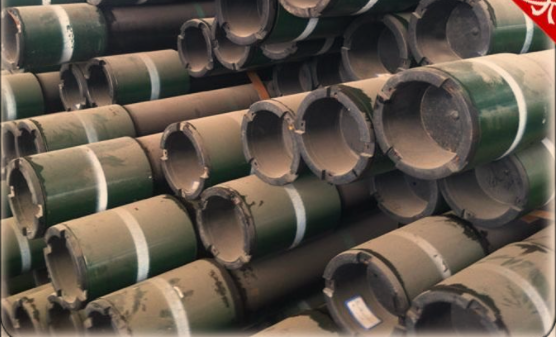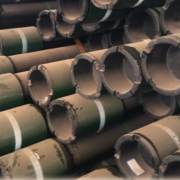Surface casing
1、Used to seal the upper unstable loose, collapse-prone and leaky formations and water layers.
2、Installation of wellhead device to control well blowout.
3、Support part of the weight of technical casing and oil layer casing.
The depth of the surface casing down depends on the specific situation, usually a few dozen meters to a few hundred meters or deeper (30 to 1500m). The cement return height outside the tubing is usually returned to the surface. When drilling high-pressure gas wells, if the upper rock layer is loose and broken, the surface casing needs to be lowered to prevent the high-pressure gas from escaping the surface. If the surface casing needs to be deeper and the first drilling time is longer, a layer of conduit should be considered before placing the surface casing. Its function is to seal the surface, prevent the collapse of the wellhead and form a drilling fluid circulation channel for a long drilling period. The conduit is generally lowered to a depth of 20-30 meters, with the cement outside the conduit returned to the surface. The conduit is usually made of spiral or straight seam pipe.
Technical Casing
1、It is used to seal complex formations where drilling fluid is difficult to control, severe leakage layers, and oil, gas and water formations where the pressure difference is significant, etc., to prevent the well diameter from expanding.
2、In directional wells with large well slope, technical casing is lowered in the slope-making section to facilitate the safe drilling of directional wells.
3, for the installation of well control equipment, blowout prevention, leak prevention and suspension of the tail pipe to provide the conditions, the formation casing also has a protective role.
Technical casing does not have to be lowered, but can be controlled by using high quality drilling fluids, accelerating drilling speed, strengthening drilling and other measures to control the complexities of the well, and strive not to lower or less technical casing. The depth of the technical casing is determined by the complex formation to be sealed. The cement return height should reach more than 100 meters of the formation to be sealed, and for high-pressure gas wells, the cement is often returned to the surface in order to better prevent gas leakage.
Oil Formation Casing
It is used to seal off the target layer from other layers; to seal off oil, gas and water layers with different pressures, and to establish an oil and gas channel in the well to ensure long-term production.
The depth of the formation casing depends on the depth of the target formation and the completion method. For high pressure wells, the cement slurry should be returned to the ground to reinforce the casing and enhance the sealing of the casing wireline so that it can withstand the larger shut-in pressure.


